Itinerary for One Day in Hallstatt: Is It Worth Visiting?

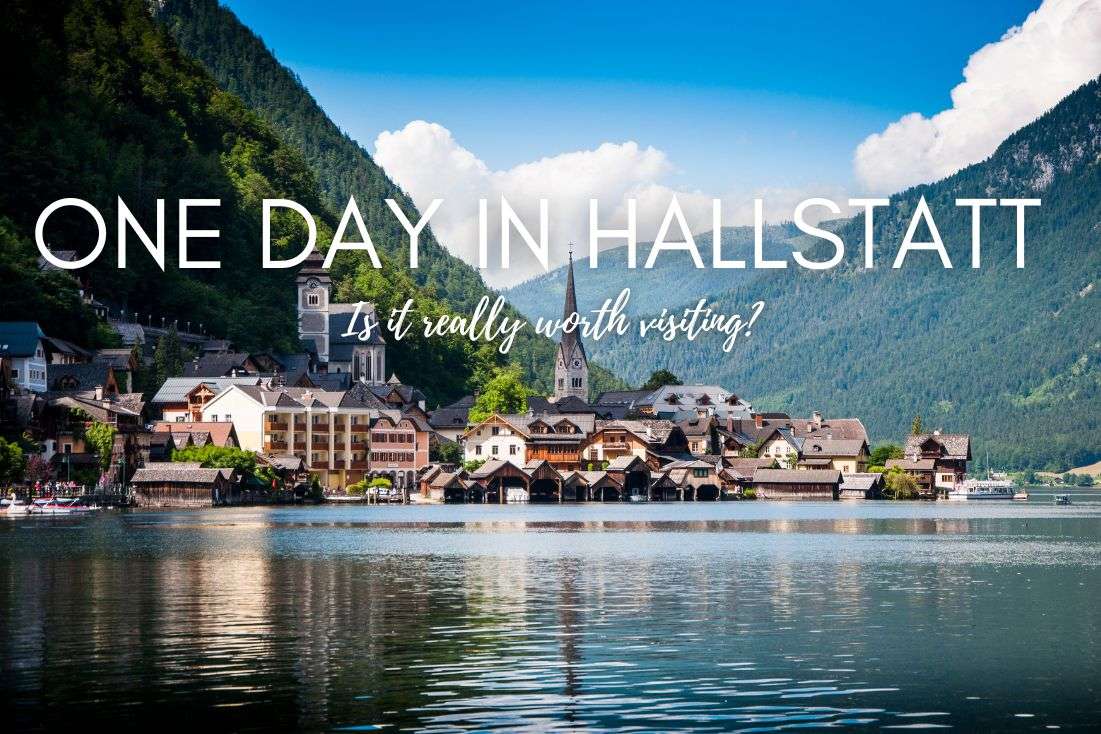
Thinking about spending one day in Hallstatt and wondering if this ridiculously famous (and crowded) lakeside village is actually worth visiting? You’re not alone. I asked myself the same thing before my first visit. And I’m not a romantic strolling-for-an-hour-looking-at-nothing-much type by a long shot.
Is Hallstatt worth visiting?
My honest answer is: Hallstatt is absolutely worth visiting, if you come prepared, avoid the tourist pitfalls, and don’t expect some hidden alpine village that no one’s heard of. (For me, it helped that my first visit was during COVID = fewer people!)
What you can expect is one of the most photogenic places in Austria, but also a mesmerizing salty history and views of views. The combo of lakeside charm and alpine drama that Hallstatt has going on is pretty much unbeatable.
But what really makes Hallstatt worth visiting—even for those who usually roll their eyes at tourist hotspots—is that it’s the perfect base for exploring the Dachstein Krippenstein region. Think epic viewpoints like the 5 Fingers and that hair-raising suspension bridge, incredible hikes, and icy caves that you simply can’t miss.
My top tip is to add Dachstein to your Hallstatt trip: Upgrade your Hallstatt day trip with a high-altitude adventure at Dachstein. Check out my full Dachstein from Hallstatt guide for all the details on how to get there are all the fun attractions you shouldn’t miss in the area.
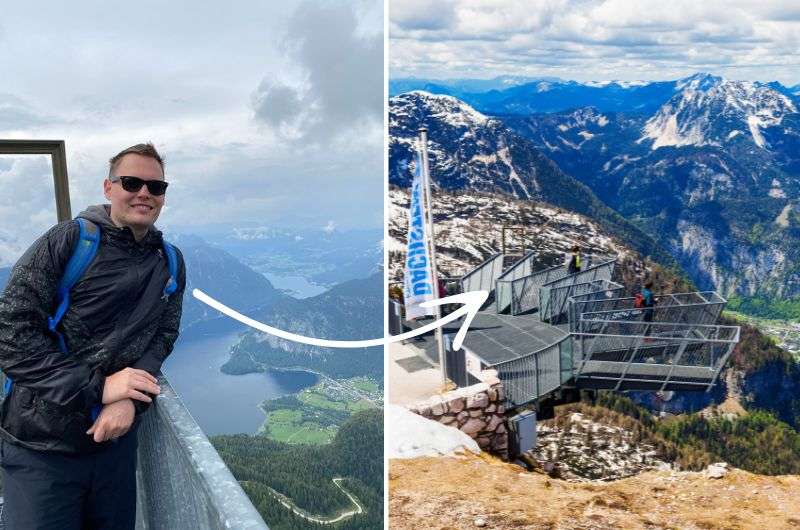
One of Dachstein’s coolest attractions, the 5 Fingers viewpoint, is easy to reach from Hallstatt
What you’ll find in this Hallstatt guide
This guide gives you a realistic one-day Hallstatt itinerary that covers the famous sights, a few lesser-known gems, and brutally honest commentary to keep your expectations in check.
I also include details on getting into Hallstatt, the train station, and parking tips (you’ll need them!), and even tips on where I stayed, ate, and why I skipped the tourist ferry and rented my own boat instead.
I’ve visited Hallstatt (more than once, and not just as a quick day trip), and despite its absurd popularity, it's still my favorite town in Austria. You can absolutely see the best of Hallstatt in one day without losing your mind—if you know where to go, when to go, and what to skip.

Let’s go.
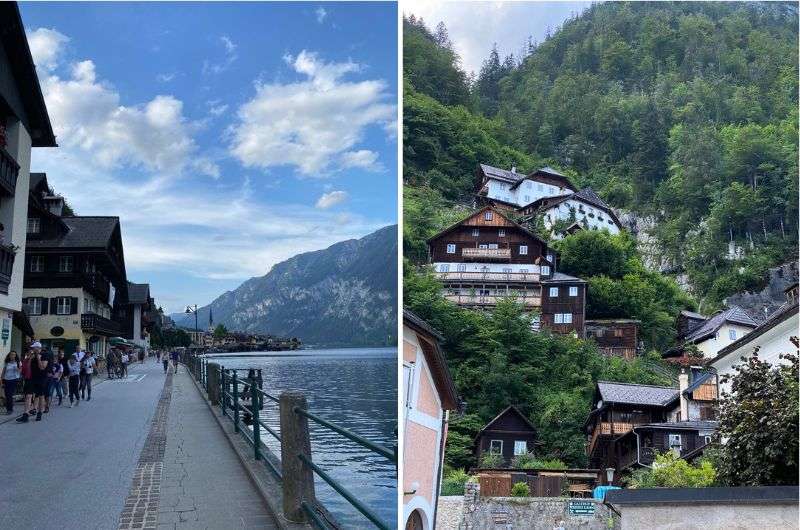
Hallstatt's charming streets and typically Austrian village architecture
TL;DR: Hallstatt in one day itinerary list of stops
Here’s your one-day plan at a glance:
-
Start with a stroll through the old town. Hit the Evangelical Church, Market Square, and take that iconic photo spot.
-
Pop into the Hallstatt Museum. Quick history lesson to wrap your head around the salt mining fame of the area. Spend 30–60 minutes max.
-
Get spooky at the Bone House. Painted skulls at the ossuary—definitely not your average chapel stop.
-
Tour the Hallstatt Salt Mines (Salzwelten). Ride the Hallstatt cable car and slide (literally) through ancient tunnels. A must-visit!
-
Take in the view from the Skywalk. That’s the World Heritage View, not the Dachstein one. Add lunch with a panorama at Rudolfsturm.
-
Finish with a boat ride on Hallstatt Lake. Rent a quiet electric boat or hop the ferry. Either way, the views kill it.
All of this is doable in one day, but I strongly encourage you not to visit Hallstatt as a day trip and stay at least one night. That way, you can enjoy some breathing room after the tour buses leave at 4 pm. Hallstatt without the day trippers is bliss!!
Sometimes, all you need to do is take the first step... I've filtered out the best hotels in Hallstatt for you
Save it for yourself to come back to later, or share with your friends on social media!
Hallstatt in Austria map: 1-day itinerary
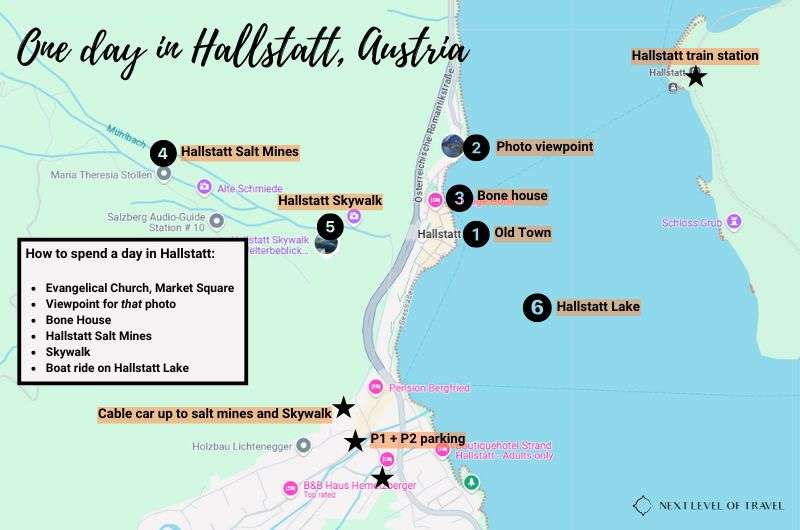
These are the stops on your Hallstatt itinerary for one day
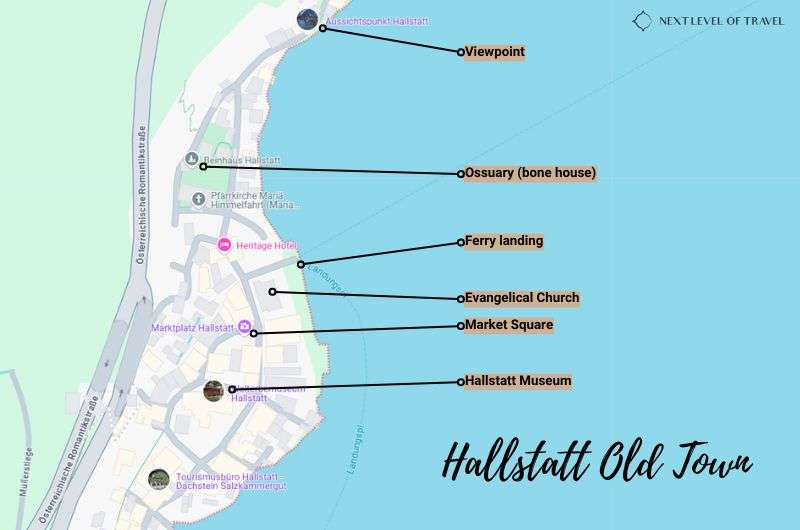
And here is a closer look at the highlights in Hallstatt Old Town
My top tips for visiting Hallstatt
- Start early. No, really. Hallstatt turns into a tourist zoo by 10 am when the tour buses from Salzburg arrive.
- Don’t drive into town. You can’t, Hallstatt is a car-free zone. Park in P2 (the closest parking lot) or P3 and P4 (further out) and walk or take a shuttle into town (parking details at the end of this article).
- Hallstatt train station isn’t actually in Hallstatt. It’s across the lake in a place called “nowhere,” and you’ll need to hop on a ferry to get into town.
- Bring cash. For boats and some restaurants, and shops.
- Rent your own electric boat on the lake. It’s quieter and won’t make you feel like a herded sheep.
- Hallstatt Skywalk ≠ Dachstein Sky Walk. The Hallstatt Skywalk is called the World Heritage View. The Dachstein Sky Walk is on a completely different mountain. Don’t get them mixed up.
- Skip the tourist restaurants. Go to Rudolfsturm, close to the Salt Mines and Skywalk, for lunch with a view!
- Hotel recommendation: I opted out of staying in Hallstatt and booked a room at COOEE Alpin Hotel Dachstein over in Gosau just a few minutes away. It’s peaceful with amazing views and in the perfect spot for visiting not just Hallstatt, but also for exploring Dachstein for a couple of days.
Here’s how to spend one perfect day in Hallstatt, step by step:
Stop 1 on your Hallstatt Itinerary: Stroll around Old Town and get that photo
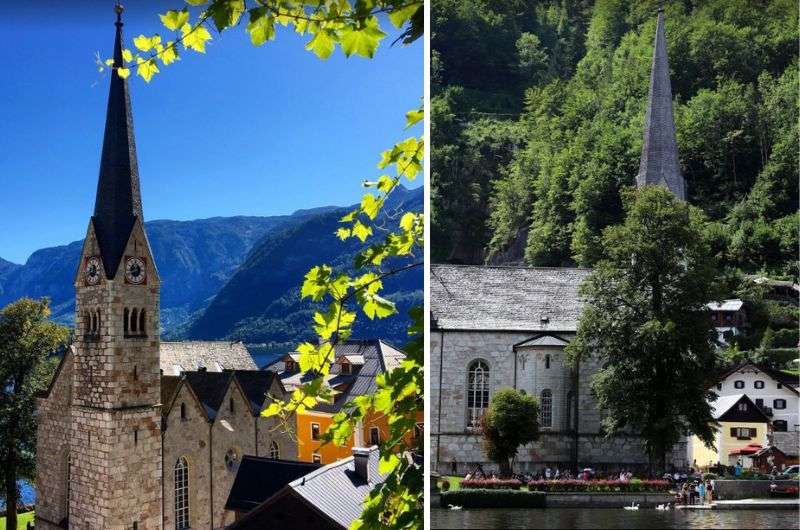
The Evangelical Church in Hallstatt
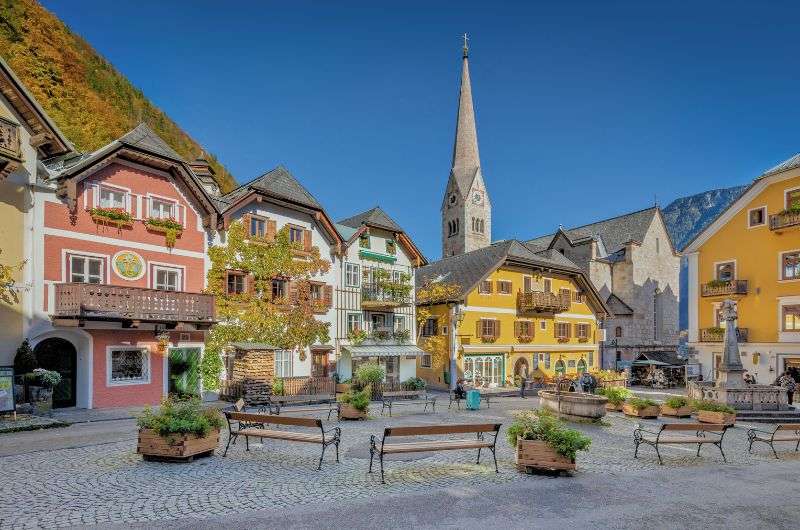
Hallstatt really has a rare type of beauty
Time spent here: 45 minutes
I strongly encourage you to start your day in Hallstatt at 8 am, because the day trippers start arriving at 9 am and by 10 am Hallstatt is a frenzy of selfie-obsessed tourists and it gets a little harder to enjoy the scenery. See below for my arrival and parking tips.
Start slow with a stroll through Hallstatt’s picturesque little alleys and to take in Hallstatt’s tiny Austrian village atmosphere. You’ll want to make your way to the Evangelical Church—you know, the one that ends up on half the postcards in Austria—and take in the view over Hallstatt Lake. Just below it, the Market Square gives you your first taste of Hallstatt’s overachieving charm: pastel buildings, wooden balconies, and more flower boxes than sense. It’s compact, but that’s the point.
Capture the classic Hallstatt photo
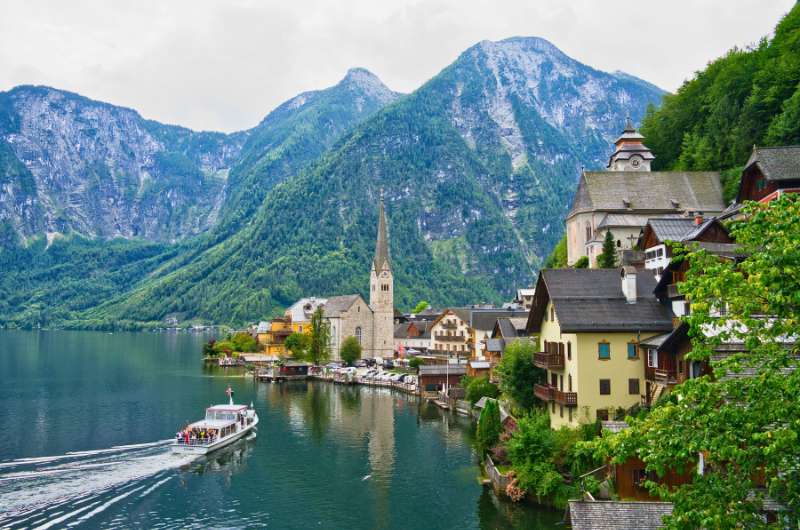
The classic Hallstatt postcard photo from the viewpoint north of Old Town
Then, walk along the lake shore north of the ferry dock for about 5 minutes until you reach the perfect photo spot—you’ll know when you see it. This is the spot for the classic Hallstatt lake-and-mountain shot.
Stop 2 on your Hallstatt Itinerary: World Heritage Hallstatt Museum & Excavations
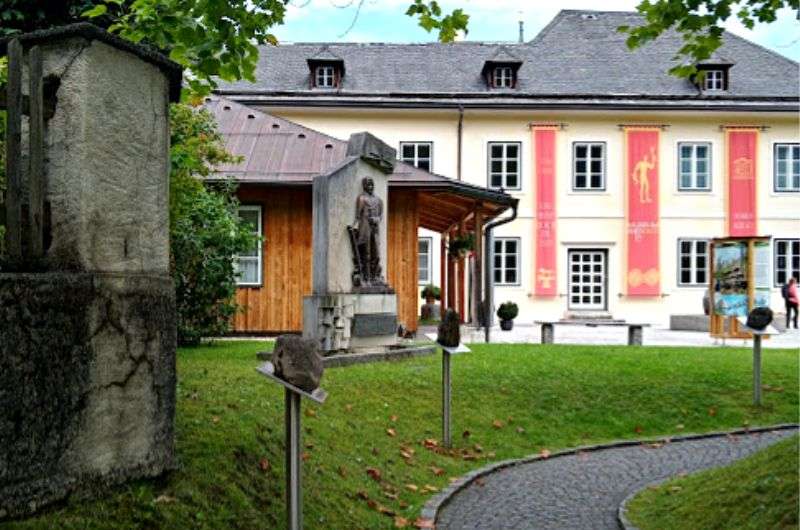
The World Heritage Museum Hallstatt—a 30-minute visit
- Time spent here: 1 hour
- Opening times for the museum: May to September: 10 am to 6 pm daily, April and October 10 am to 4 pm, November to March: 11:30 am to 3:30 pm Wednesdays to Sundays only (closed on Mondays and Tuesdays).
- Tickets to the museum cost EUR 12.
This little museum—the World Heritage Museum Hallstatt (Welterbemuseum Hallstatt)—stands as a testament to Hallstatt’s rich heritage, starting with the ancient tribes who inhabited this area 7,000 years ago, when the whole salt mining history of this area began, spanning all the way to the more recent times.
I admit the museum isn’t one of the newest in terms of décor, but I loved finding artefacts from the Bronze Age, Celts, and Roman settlement periods and learning about Hallstatt’s cultural significance.
If you are really interested in a thorough history lesson, you will probably spend at least an hour there. Since I was more into outdoor explorations, I saw everything I needed in about 30 minutes.
Find Hallstatt’s hidden archeological excavations
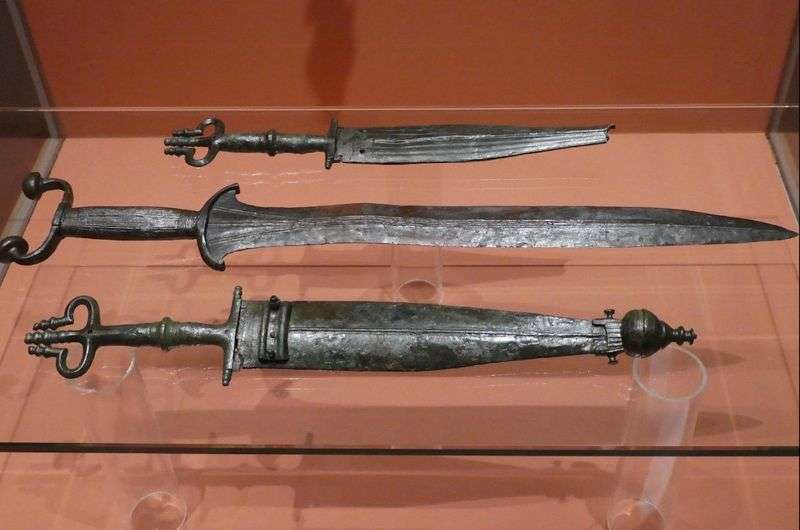
They have quite an interesting collection
Now, head over to the sports equipment store across the little square… really! . I found something incredible there—an archaeological excavation site right under the store (accidentally found by the owner of the building when he tried building a boiler room)..
Thanks to the archaeologists and university students from Vienna, you can now explore the excavation pieces and ancient walls from Hallstatt’s rich history.
- Open daily from 9 am to 6 pm, admission is free of charge
- Most of the displays are in German, so a translator app comes in handy
Stop 3 on your Hallstatt Itinerary: Hallstatt Ossuary (bone house)

Hallstatt bone house displays over 1,200 human skulls
- Time spent here: 1 hour
- Open May to September daily from 10 am to 6 pm, October daily from 10 am to 5 pm, November to April only Wednesdays to Sundays, 11:30 am to 3:30 pm
- Tickets cost EUR 2
My next stop on this one-day Hallstatt itinerary was the Hallstatt Ossuary, aka Bone House—where skulls get an artsy makeover and ancient stories literally resurface.
I walked up the hill above Hallstatt village to the Catholic Church of the Assumption of Our Lady. The tiny size of the cemetery is the reason the bone house even exists—to make room for the next generation of dead people.
St. Michael’s Chapel, tucked right next to the cemetery, houses what the locals call the Beinhaus ("bone house"). When the people back in the day ran out of space to let their loved ones rest for eternity, they decided to build an ossuary where their skulls could be kept for eternity.
There are now more than 1,200 skulls in Hallstatt’s bone house, out of which about 600 have hand-painted decorations. It’s a one-of-a-kind fusion of creativity and chilling reverence.
I hung around for 20 minutes before heading to my next stop—Hallstatt’s best attraction, the salt mines!
Stop 4 on your Hallstatt Itinerary: Hallstatt Salt Mines (Salzwelten)
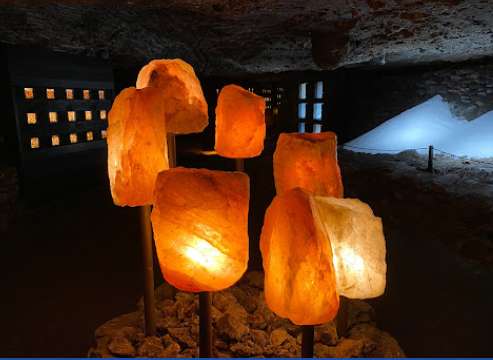
The salt mines in Hallstatt
- Time spent here: 2 hours
- Open 9:30 to 4:00 pm from April to October, the tour takes 90 minutes
- Renovation notice: Hallstatt Salt Mines will be closing for renovation from September 2025. Starting in April 2025, the footpath to the Salt Mines will also be closed.
- Tickets cost EUR 43 and include the salt mines and cable car round trip
This next stop tops my what to see in Hallstatt list—the legendary Salzwelten, also known as the Hallstatt Salt Mines.
This place isn't just any mine; it's the very first salt mine ever established, with a history that reaches back 7,000 years. Back then, salt was the real deal, and the whole Salzkammergut region was named after what they called "white gold" (Salzkammergut translates to something like “Estate of the Salt Chamber”).
My experience on the tour
The tour started with a tiny train ride deep into the cave, which I found to be a great experience. We got helmets and raincoats, and travelled through incredibly narrow passages of the mines, descending almost a kilometer (0.60 miles). Along the way, we passed the oldest wooden staircase, used by miners nearly 3,000 years ago.
Next, we walked about 2 km (1.3 mi), passing exhibitions showcasing captivating archeological excavations.
But the most fun was the long, wooden slides connecting different mine levels. You just sit down and swoosh down a floor! This mine tour is an absolute blast and a history lesson. Hands down, one of Austria’s finest attractions.
Pro tip: Wear warm gear and sturdy shoes—it’s a brisk 8 °C (46 °F) inside and the tour takes about 90 minutes.
I am guessing you’re getting hungry by now, so I think it’s time for lunch with a view!

Let’s Minecraft in the 7,000-year-old salt mines
Getting to the Hallstatt Salt Mines
To reach the mine, you can either take a 1.5-hour hike or save your energy by taking the Hallstatt cable car, which is by P2 parking lot in the south part of town (not in Old Town). The hike starts at the cable car station. (This is the same cable car that takes you up to Hallstatt Skywalk, see next stop on the itinerary.)
Note: Due to renovations that started in April 2025, the hiking trail is closed until further notice.
Stop 5 on your Hallstatt Itinerary: Lunch at Rudolphsturm and superb views at Hallstatt Skywalk (World Heritage View)

The view from Hallstatt Skywalk (World Heritage View) is pretty insane
- Time spent here: 1.5 hours including lunch
Not far from the Salt Mines is your next stop, the Hallstatt Skywalk, also known as the Hallstatt World Heritage View (not to be confused with the Dachstein Sky Walk--that’s in a very different place—see my Dachstein from Hallstatt article to learn how to get there). But first, lunch.
Lunch at Rudolfsturm
From the Salt Mines, walk over the suspension bridge to Rudolfsturm Restaurant, where you’re in for a treat in the form of dining with a spectacular lookout over Hallstatt Valley. Just come armed with patience—the restaurant doesn’t have nearly enough servers for the volume of people trying to grab a bite.
Take in the views from Hallstatt Skywalk
When you’re done with lunch, head over to the World Heritage View, a triangular viewing platform reaching out 12 m (40 ft) into thin air.
Austria sure has a knack for crafting platforms that hang over valleys, giving you a taste of that airborne feeling. The views are stunning. Brace yourself with patience to wait in a line to take pictures of the impressive scenery, because you won’t be the only one there, but it’s worth it.
Stop 6 on your Hallstatt Itinerary: Boat trip on Hallstatt Lake (Hallstätter See) or a walk along the lake

Taking a walk along the promenade is a must-do activity in Hallstatt
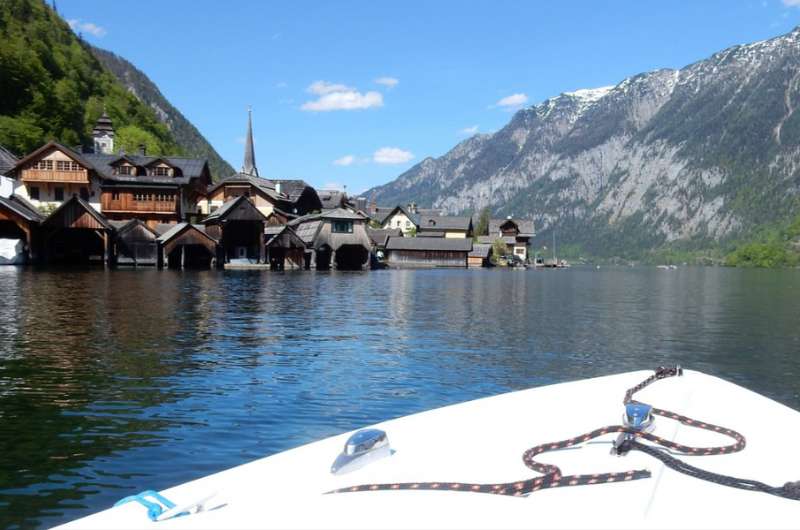
Seeing Hallstatt from a rental boat was the best—no crowds, full autonomy, and a relaxing time
- Time spent here: 1 hour
Did you think I wouldn’t mention Hallstatt Lake at all? Come on now, how could I let you miss out on the icing on the cake of this charming town!
You’ve got two solid options for getting out on Lake Hallstatt, and honestly, you can’t go too wrong with either—unless you stay on land.
Rent an electric boat and be your own captain
I chose to rent a small electric boat (EUR 30 an hour) and highly recommend doing the same if you want to float around without sharing elbow space with 50 strangers and someone loudly narrating in five languages. These little boats are super quiet, easy to drive (even if you’ve never touched a boat before), and fit up to 4 people. Just one thing—bring cash, because the rental place still operates like it’s 1999.
Or hop on the ferry
Not into DIY boating? No problem. The ferry is a classic choice (not my choice, but still). It runs year-round, connecting Hallstatt with the train station across the lake. In summer, they also run a proper round-trip sightseeing cruise (EUR 18), but even the basic ride to the station and back (EUR 4 one way, 10 minutes) gives you spectacular views.
And there you have it, one perfect day in Hallstatt. Like I said, I strongly urge you to stay a night or two and head out to explore more of the Dachstein region. Remember, the Austrians know how to build some epic viewpoints, and these are the Alps!
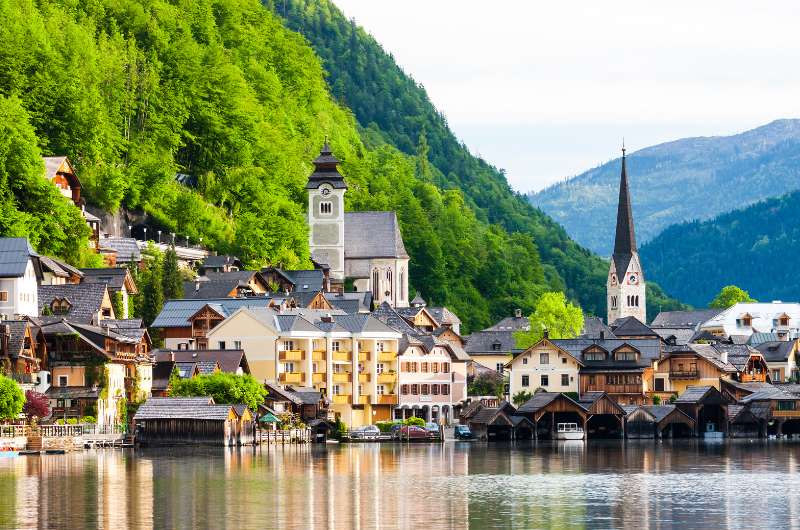
The views of typical Austrian houses and Hallstatt's churches are great from a boat
Extend your itinerary: Visit Dachstein from Hallstatt!
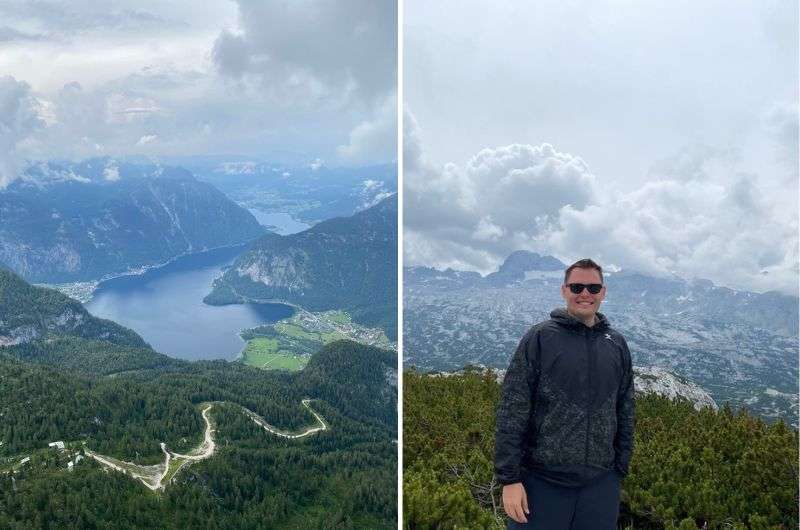
Views from Dachstein Krippenstein are always jaw-dropping (well, unless you go up when it’s foggy)
I don't think any visit to Hallstatt is complete without a trip to the Dachstein glacier. There are 2 sides you can visit from, and I recommend you do both. Of course, you’ll need 1 or 2 extra days for that.
I used Hallstatt as a base to visit the Dachstein Krippenstein area, staying for 3 nights. I used one day to explore Hallstatt, and one day each for each of the two main Dachstein tourist areas—where you’ll find the 5 Fingers viewpoint and Dachstein ice caves on one side, and the Dachstein Sky Walk, Suspension Bridge, Stairway to Nothingness, and the Ice Palace on the other.
I want to reiterate that these are two separate sides of the mountain, and driving between them takes about 1.5 hours and several mountain gondola rides, so it’s not exactly a quick hop between the two.
I’ve covered all the attractions and the logistics of getting to them from Hallstatt in easy-to-follow detail in my article explaining how to visit Dachstein from Hallstatt. You’re welcome.
How to get to Hallstatt by car (+ parking and shuttle tips)
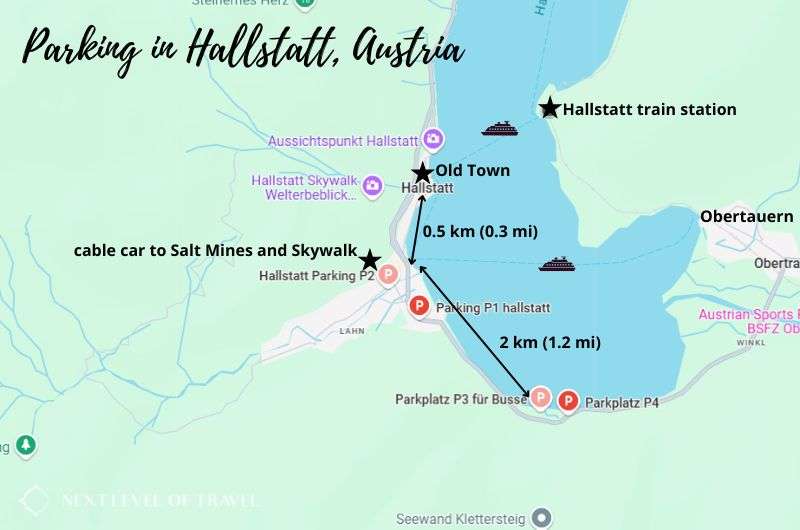
Parking lots P1 and P2 are full by 9 am. After that, try your luck at P3 and P4. It’s about a 30-minute walk to town from there (or take the shuttle bus)
Hallstatt is stunning, yes, but getting there is a bit of a logistical nightmare. Driving to Hallstatt offers flexibility and strong nerves. Here's what you need to know:
-
Hallstatt is a car-free town.
-
During peak tourist seasons, parking lots, especially the coveted P1 and P2, fill up quickly. Arrive before 9 am for any chance of securing a spot. After that, be prepared to wait or park further out at P3 or P4.
-
Parking fees are consistent across P1 to P4. Some sample costs: one hour costs EUR 4.50, five hours cost EUR 10, and a 12 to 24-hour parking ticket is EUR 18.
-
P1 is mainly reserved for hotel guests. They can get a free shuttle into Old Town from P1 or P2.
-
P2 is the main “in-town” parking lot that has 140 parking spaces. It’s next to the Hallstatt cable car up to the Hallstatt Skywalk and the Hallstatt Salt Mines. About a 10-minute walk to Hallstatt Old Town. Shuttles are only for hotel guests.
-
P3 is for cars, buses, and campervans, and P4 catches the overflow. You can walk for 30 minutes to get to the southern part of Hallstatt or pay EUR 2 for a shuttle bus.
-
Alternative parking: If parking in Hallstatt is full, try your luck in nearby villages like Obertraun or Bad Goisern and then get on the ferry into Hallstatt.

You need to take the ferry into town if you’re coming to Hallstatt by train (or just for fun)
How to get to Hallstatt by train
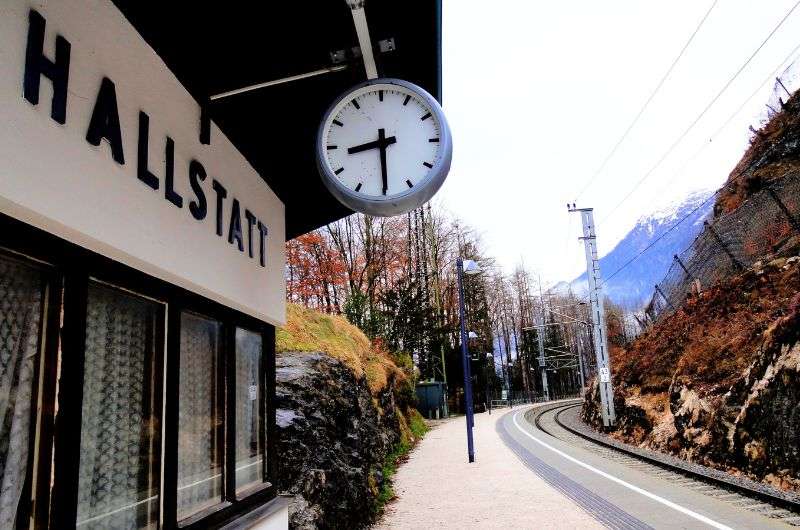
Hallstatt train station is tiny and cute... and all the way across the lake
If you’re taking the train, I’m happy to report that there is a dedicated Hallstatt train station, but don’t get too excited—it’s not in town. It’s on the other side of Hallstatt Lake. You’ll need to take a train to Attnang-Puchheim, transfer toward Obertraun, and then hop off at Hallstatt station. Getting into Old Town involves a boat ride across the lake. It’s scenic, but not exactly seamless.
Vienna to Hallstatt day trip? Way too much for one day
Driving from Vienna to Hallstatt takes about 3.5 hours one way, which means you’ll spend at least 7 hours in the car for a glimpse of one—albeit pretty—lakeside village. Even if you leave at the crack of dawn, you'll arrive late morning, scramble to see a few things, skip half the good stuff (Salt Mine? Boat ride? Forget it), then hit the road again before dinner. That doesn’t sound like a sane idea to me.
Hallstatt deserves a full day—minimum. If you’re making the trip from Vienna, stay overnight. You’ll thank yourself when you're sipping coffee by the lake instead of white-knuckling your way back through Alpine roads in the dark.
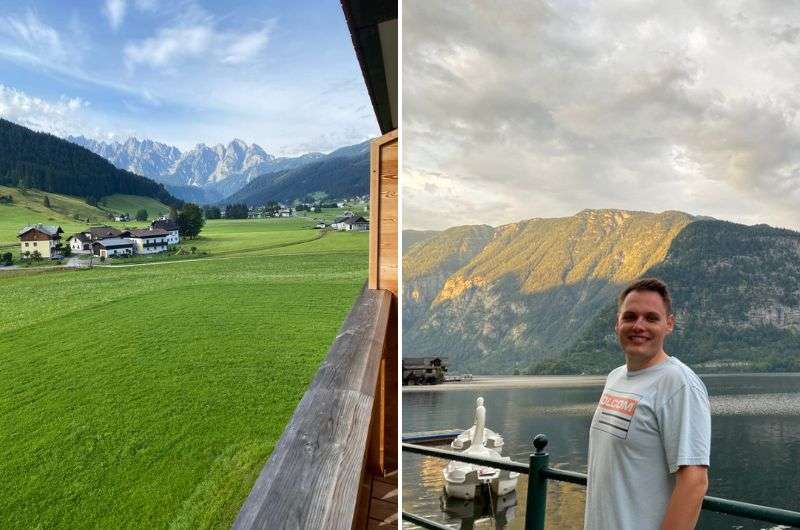
Stay overnight in Hallstatt and enjoy a sunset walk by Hallstatt Lake and wake up to views like these from your balcony (on the left: this is what I woke up to when staying at COOEE Alpin Hotel Dachstein)
Salzburg to Hallstatt day trip? That works
Now, if you’re coming to Hallstatt from Salzburg, that’s a different story. It’s only about 1.5 hours by car, which makes it doable. But hear me out: Salzburg should be the day trip, not Hallstatt! Less than a day in Salzburg was enough for me—lovely town, but it’s no Hallstatt. Give Hallstatt the spotlight it deserves by making it the star of your trip.

Salzburg is nice... but Hallstatt is nicer
When is the best time to visit Hallstatt?
Late spring (May–early June) and early autumn (September–early October) are hands-down the best times to visit Hallstatt. The weather is pleasant, the crowds are manageable (well, more manageable), and the lake plus mountains combo is at peak aesthetic levels.
Summer (July–August)? Brutally crowded. Hallstatt gets absolutely mobbed. If you go, then start early and stay late.
Winter isn’t ideal for a first-time visit, since daylight hours are short and some places are closed or have shorter operating hours.
Summary:
- Best: May–early June, September–early October
- Acceptable (if you plan well): Summer
- Only if you're into the frozen aesthetic: Winter
Sometimes, all you need to do is take the first step... I've filtered out the best hotels in Hallstatt for you
Save it for yourself to come back to later, or share with your friends on social media!
This post contains affiliate links. If you make a booking through one of my links, I may earn a small commission—at no additional cost to you. Thank you for your support!




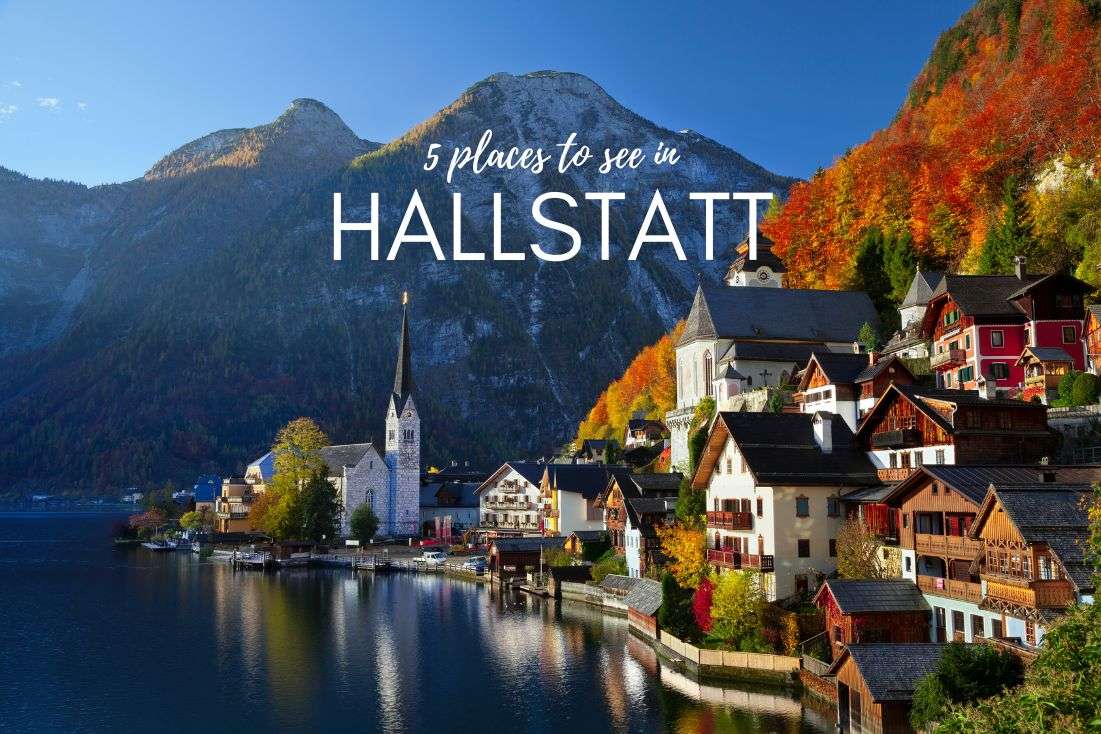

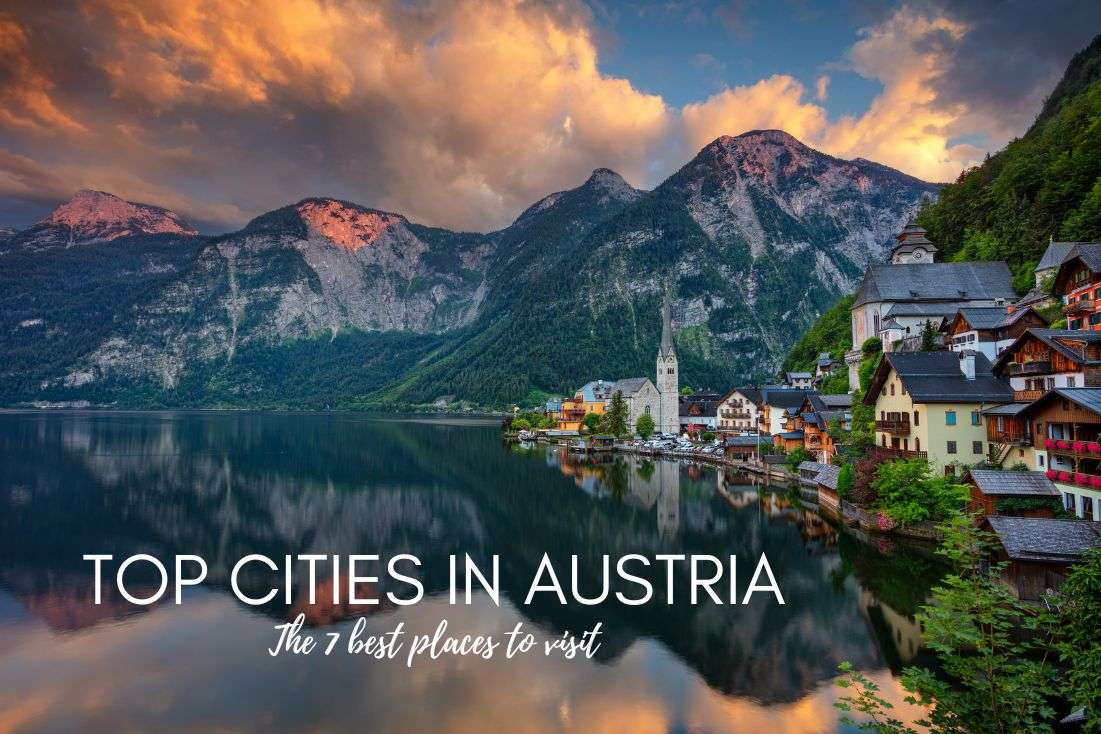



Comments | Thoughts? Give us a shout!